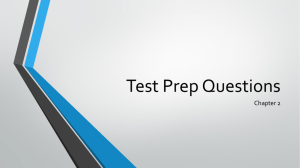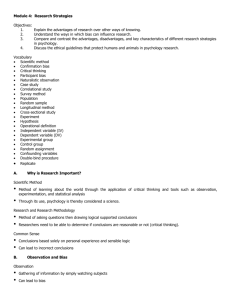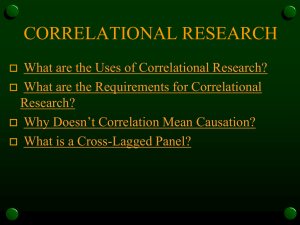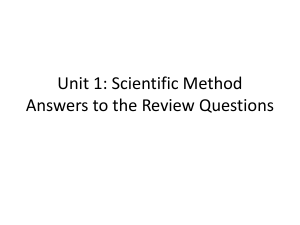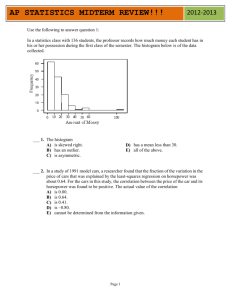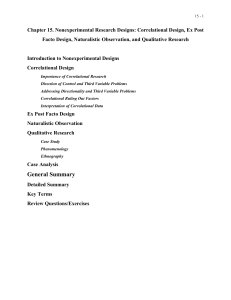500 Questions chapter 2 answers
advertisement
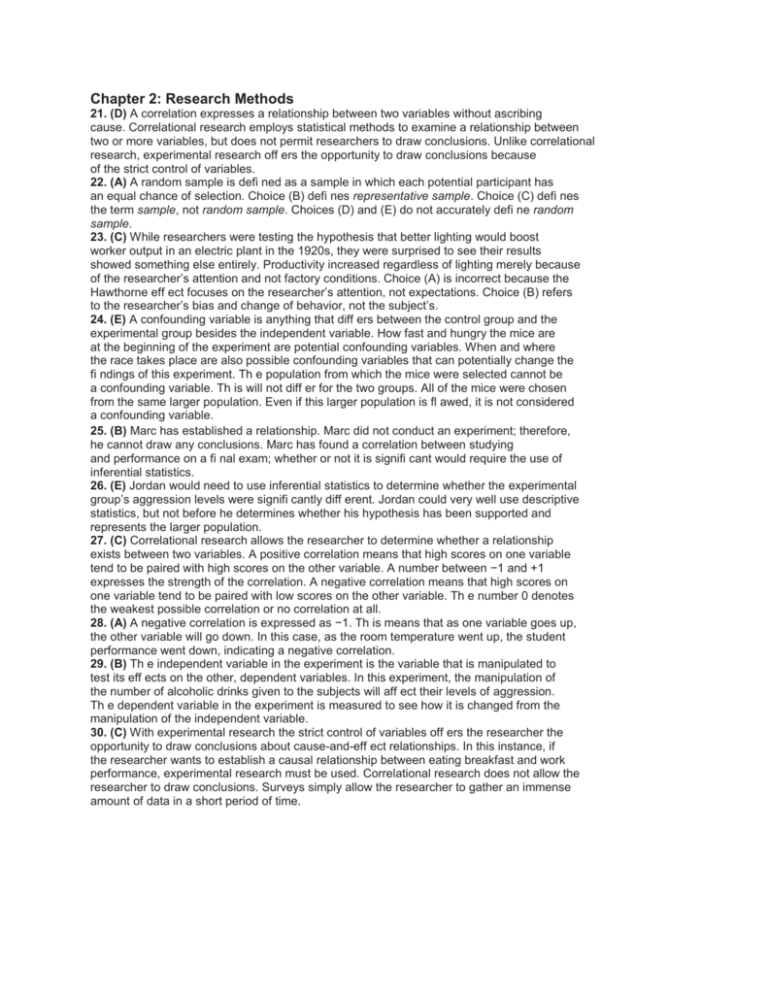
Chapter 2: Research Methods 21. (D) A correlation expresses a relationship between two variables without ascribing cause. Correlational research employs statistical methods to examine a relationship between two or more variables, but does not permit researchers to draw conclusions. Unlike correlational research, experimental research off ers the opportunity to draw conclusions because of the strict control of variables. 22. (A) A random sample is defi ned as a sample in which each potential participant has an equal chance of selection. Choice (B) defi nes representative sample. Choice (C) defi nes the term sample, not random sample. Choices (D) and (E) do not accurately defi ne random sample. 23. (C) While researchers were testing the hypothesis that better lighting would boost worker output in an electric plant in the 1920s, they were surprised to see their results showed something else entirely. Productivity increased regardless of lighting merely because of the researcher’s attention and not factory conditions. Choice (A) is incorrect because the Hawthorne eff ect focuses on the researcher’s attention, not expectations. Choice (B) refers to the researcher’s bias and change of behavior, not the subject’s. 24. (E) A confounding variable is anything that diff ers between the control group and the experimental group besides the independent variable. How fast and hungry the mice are at the beginning of the experiment are potential confounding variables. When and where the race takes place are also possible confounding variables that can potentially change the fi ndings of this experiment. Th e population from which the mice were selected cannot be a confounding variable. Th is will not diff er for the two groups. All of the mice were chosen from the same larger population. Even if this larger population is fl awed, it is not considered a confounding variable. 25. (B) Marc has established a relationship. Marc did not conduct an experiment; therefore, he cannot draw any conclusions. Marc has found a correlation between studying and performance on a fi nal exam; whether or not it is signifi cant would require the use of inferential statistics. 26. (E) Jordan would need to use inferential statistics to determine whether the experimental group’s aggression levels were signifi cantly diff erent. Jordan could very well use descriptive statistics, but not before he determines whether his hypothesis has been supported and represents the larger population. 27. (C) Correlational research allows the researcher to determine whether a relationship exists between two variables. A positive correlation means that high scores on one variable tend to be paired with high scores on the other variable. A number between −1 and +1 expresses the strength of the correlation. A negative correlation means that high scores on one variable tend to be paired with low scores on the other variable. Th e number 0 denotes the weakest possible correlation or no correlation at all. 28. (A) A negative correlation is expressed as −1. Th is means that as one variable goes up, the other variable will go down. In this case, as the room temperature went up, the student performance went down, indicating a negative correlation. 29. (B) Th e independent variable in the experiment is the variable that is manipulated to test its eff ects on the other, dependent variables. In this experiment, the manipulation of the number of alcoholic drinks given to the subjects will aff ect their levels of aggression. Th e dependent variable in the experiment is measured to see how it is changed from the manipulation of the independent variable. 30. (C) With experimental research the strict control of variables off ers the researcher the opportunity to draw conclusions about cause-and-eff ect relationships. In this instance, if the researcher wants to establish a causal relationship between eating breakfast and work performance, experimental research must be used. Correlational research does not allow the researcher to draw conclusions. Surveys simply allow the researcher to gather an immense amount of data in a short period of time.
